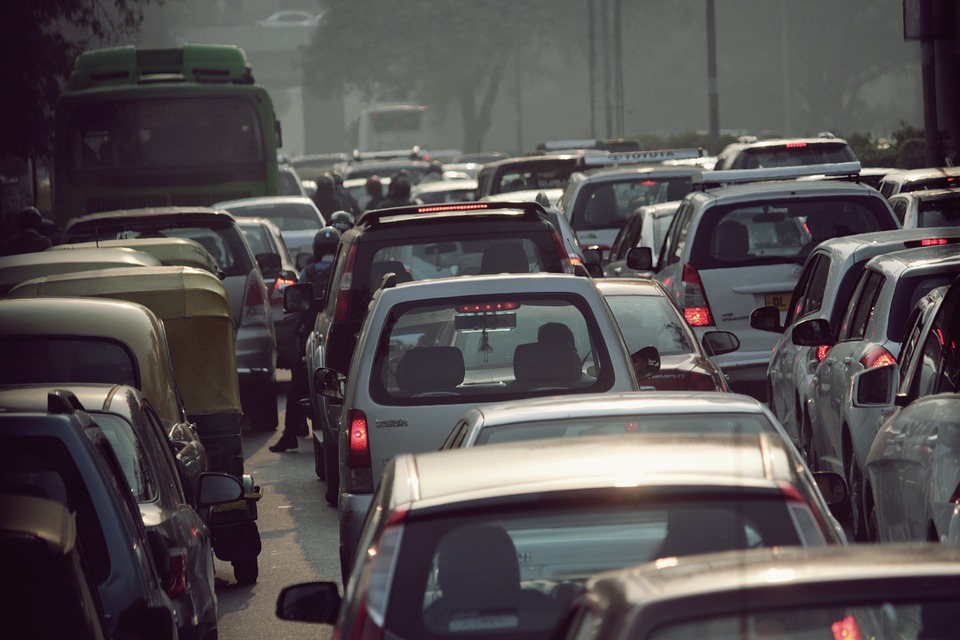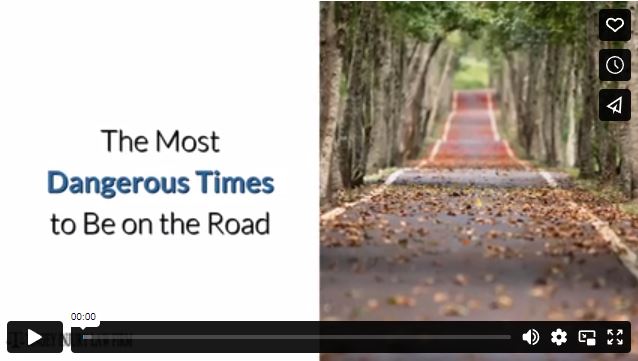Driving is such a common part of our lives that we rarely stop to think of the risks we take when we rev up the engine and head out onto the roadways. Yet car accidents are the leading cause of death among healthy U.S. citizens. According to the National Safety Council, there have been roughly 40,000 roadway deaths annually for the past few years. That averages out to over 100 deaths from car accidents in the U.S. per day.

(Pixabay / carlovenson)
The reality is, we still need to travel to work, school, and beyond, and driving is often the best way to get there. There are, however, times when it is best to stay off of the roads or to travel very cautiously given the risks.
Here’s a look at the most perilous times to be on the roads:
- Thanksgiving. Thanksgiving weekend is on its way, marking the most frequently traveled time of year. Many people travel to enjoy Thanksgiving dinner with family and friends. Thus, the roadways can be a real jungle–particularly on the Wednesday before Thanksgiving as well as the Sunday afterward when many people are returning home.
As with most holidays, the driving dangers spike around Thanksgiving due to the influence of alcohol. Some people refer to the night before Thanksgiving as “Blackout Wednesday” or “Drinksgiving” because it is a huge night for bars. People without work the next day or college students home for the holidays may take advantage of this evening to drink with abandon—and some still end up behind the wheel. Consider staying home the night before Thanksgiving to spend time with family, help prepare the big meal, or take in a TV show or sports game.
- Christmas and New Year’s Eve. Here again, alcohol plays a major role in traffic accidents. In fact, according to the U.S. National Institute on Alcohol Abuse and Alcoholism, 40 percent of deaths related to vehicle accidents around Christmas and New Year’s Eve involve drunk drivers. Add to that the increased traffic due to holiday shopping and traveling plus the threat of inclement winter weather, and it’s a good idea to minimize your time on the road.
- Summer. On the one hand, the roads are nice and dry, and visibility is high on sunny summer days. However, the summer driving months don’t get the nickname “100 deadliest days” for nothing. The period between Memorial Day and Labor Day wins for the deadliest stretch of time for motorists. There are a number of reasons for this. First, teens are out of school and on the road more, and teens constitute the riskiest category of drivers. According to the American Automobile Association (AAA), teens are four times more likely to get in car accidents than adults. In summer, AAA reports that there are 10 deaths a day involving teenagers during this time period—up 14 percent from the rest of the year. Another reason for the high accident count in summer is simply the high volume of traffic on the roads. As more people get out for road trips and family vacations, risks naturally increase.
- Fourth of July. While this holiday falls within the “100 deadliest days,” it deserves its own category. July 4th is generally considered the deadliest day of the year for all of the reasons cited above combined with the risks of alcohol, which frequently plays a prominent role in 4th of July celebrations.
- Other deadly days. Though they may not drive up traffic accidents as drastically as the major holidays, St. Patrick’s Day and Cinco de Mayo are still responsible for a marked uptick in crashes as are big events such as the Super Bowl.
- Rainy days. Rain is a significant hazard to drivers. In fact, roughly 70% of weather-related car crashes are caused by wet pavement, and nearly half of weather-related accidents occur when rain is actually falling. Rain makes it hard to stop or slow down quickly, and it also increases your chance of hydroplaning. Rain is especially dangerous here in Nevada due to the state’s dry climate. On the rare days when it does rain, the roads are especially slick for motorists. And you’ll likely encounter plenty of Nevada drivers who don’t know how to navigate wet streets.
- Snowy/ice days. Though less of a threat than rain, snow, and ice are responsible for nearly 20 percent of weather-related wrecks. Snow and ice reduce traction so that you can’t brake as effectively and run the risk of sliding or spinning out. Most treacherous of all is black ice, which sneaks up on you because it has a matte appearance and looks more like moisture than actual ice. You may not notice it until you’ve completely lost control of your vehicle.
Though snow and ice aren’t typically a problem in the Las Vegas area, you may encounter them in your travels. It’s best to avoid driving in these conditions, especially if you don’t have much experience navigating winter weather.
Take these dangerous driving days into account as you plan out your schedule. Though you may be able to play the odds successfully, ask yourself if the gamble is worth it. The statistics suggest that it may be best to postpone your driving until the risks decrease. If you are injured at any time of year or in any conditions due to the fault of another driver, you can increase your chances of getting compensation for your injuries, medical care, property damage, and lost wages by enlisting the help of an experienced car accident injury lawyer. They can defend your interests against big insurance and get you the benefits that you deserve.
Video

